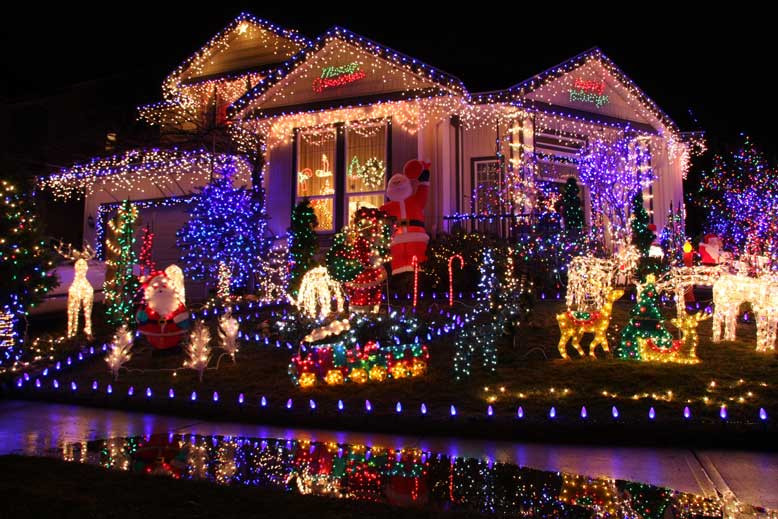Handy Outdoor Holiday Lighting Tips
Handy Outdoor Holiday Lighting Tips

Maybe it’s your first year putting up lights, or perhaps you’ve done this before, and you’re looking for some tips to make it go smoother this year. Either way, we’re here to help!
In the article below, we’ll cover some useful tips for hanging your outdoor holiday lights this year! Continue reading to learn more!
Safety Comes First
Be Cautious Hanging Lights in High Places
It’s essential to keep a buddy with you when you have to climb. No matter how well you prepare or how high-quality your equipment is, anything can happen. For this reason, have someone with you when it’s time to get to work to keep your ladder steady and watch your back. Avoid installing lights on trees that come in contact with power lines.
Remember, work smarter, not harder. Before you hang the lights, plug them in to ensure that all of them are working to prevent the need to climb back up and work off of the ladder. Also, make sure you turn your lights off whenever you leave or go to bed for the night.
Use the Proper Electrical Outlet
This type of outlet will cut the power if there is an overcurrent. If you’re unsure of what you’re looking at, GFCI outlets are distinguishable by the two “reset” and “test” buttons located at the center of the outlet. Not to mention, many of today’s GFCI outlets have an indicator light as well to show when an overcurrent has occurred. If you don’t have a GFCI outlet, a qualified electrician can permanently install one outside for you before the holidays come.
Another option is to buy a portable outdoor unit from your local home improvement store for around $20 or so. The point of all this is to ensure your lights are shining this year, not sparking or setting the place on fire!
Use the Correct Extension Cords and Keep Them Out of the Way
Try to avoid leaving cables in high-traffic areas to prevent trip-and-fall scenarios. If you have to place a cord over a high-traffic location, tape the cord down so it doesn’t hook around someone’s feet and trip them or rip down your lights.
Use the proper cord length needed to plug up your lights as well. You don’t want over-extended cords that can put a strain on both the cable itself and your lights or too long of a cord that will be piled up, creating walking hazards.
Always Use Outdoor Lights
Check Your Lights and Cords
Hanging Outdoor Holiday Lights Step-by-Step
Step 1: Prep Your Lights
It’s also a smart idea to invest in some light clips. Many people have relied on staples, clothespins, and other contraptions to hang lights in the past, but a light clip is much simpler and sturdier. These handy tools come in various types for whatever application you need, including fasteners for your doors and windows, railings, gutters, shingles, and more.
Now that you know your lights are working hook the light clips to the lights and make sure they’re all facing the same direction.





